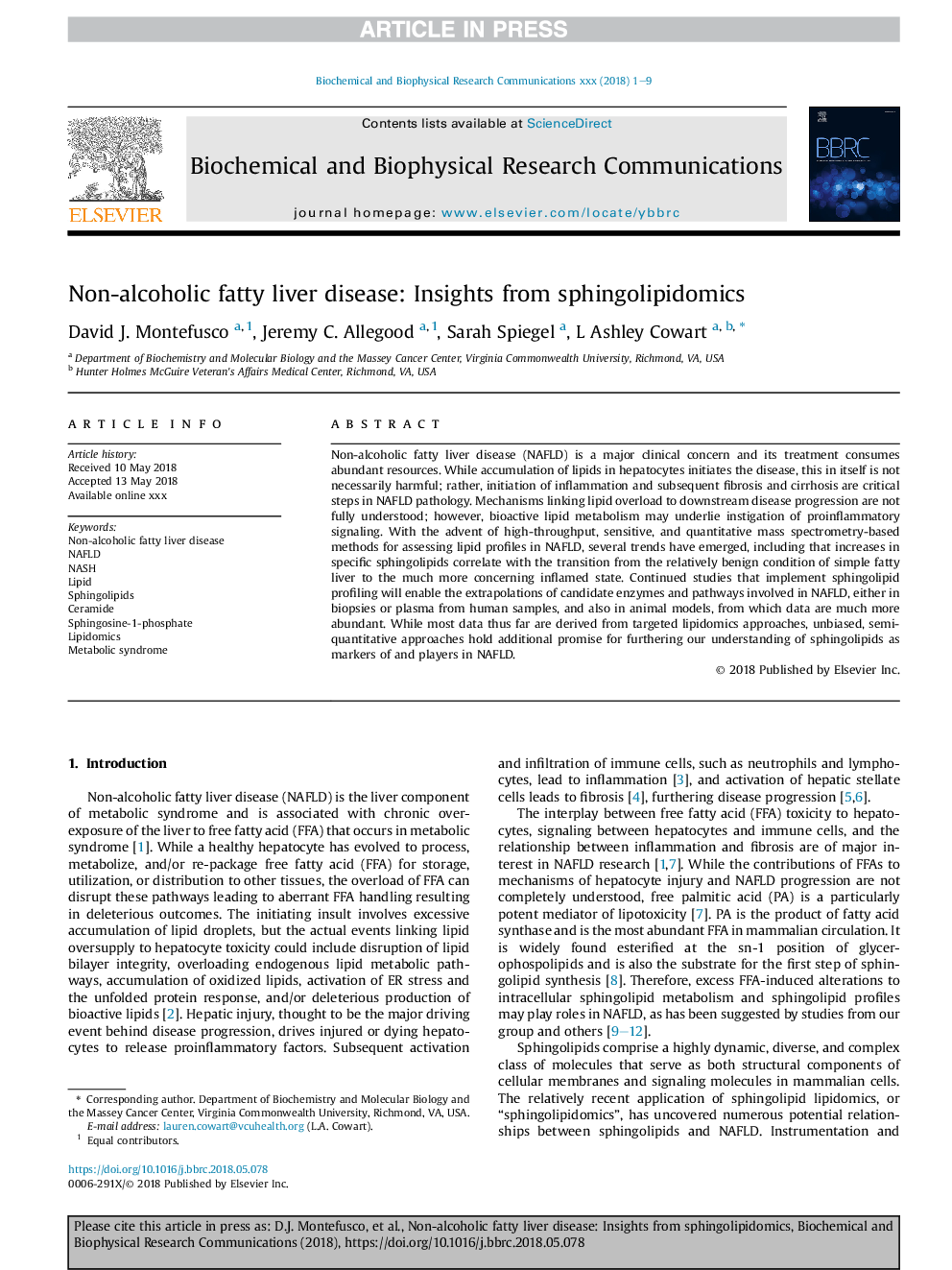| Article ID | Journal | Published Year | Pages | File Type |
|---|---|---|---|---|
| 11011002 | Biochemical and Biophysical Research Communications | 2018 | 9 Pages |
Abstract
Non-alcoholic fatty liver disease (NAFLD) is a major clinical concern and its treatment consumes abundant resources. While accumulation of lipids in hepatocytes initiates the disease, this in itself is not necessarily harmful; rather, initiation of inflammation and subsequent fibrosis and cirrhosis are critical steps in NAFLD pathology. Mechanisms linking lipid overload to downstream disease progression are not fully understood; however, bioactive lipid metabolism may underlie instigation of proinflammatory signaling. With the advent of high-throughput, sensitive, and quantitative mass spectrometry-based methods for assessing lipid profiles in NAFLD, several trends have emerged, including that increases in specific sphingolipids correlate with the transition from the relatively benign condition of simple fatty liver to the much more concerning inflamed state. Continued studies that implement sphingolipid profiling will enable the extrapolations of candidate enzymes and pathways involved in NAFLD, either in biopsies or plasma from human samples, and also in animal models, from which data are much more abundant. While most data thus far are derived from targeted lipidomics approaches, unbiased, semi-quantitative approaches hold additional promise for furthering our understanding of sphingolipids as markers of and players in NAFLD.
Keywords
Related Topics
Life Sciences
Biochemistry, Genetics and Molecular Biology
Biochemistry
Authors
David J. Montefusco, Jeremy C. Allegood, Sarah Spiegel, L Ashley Cowart,
